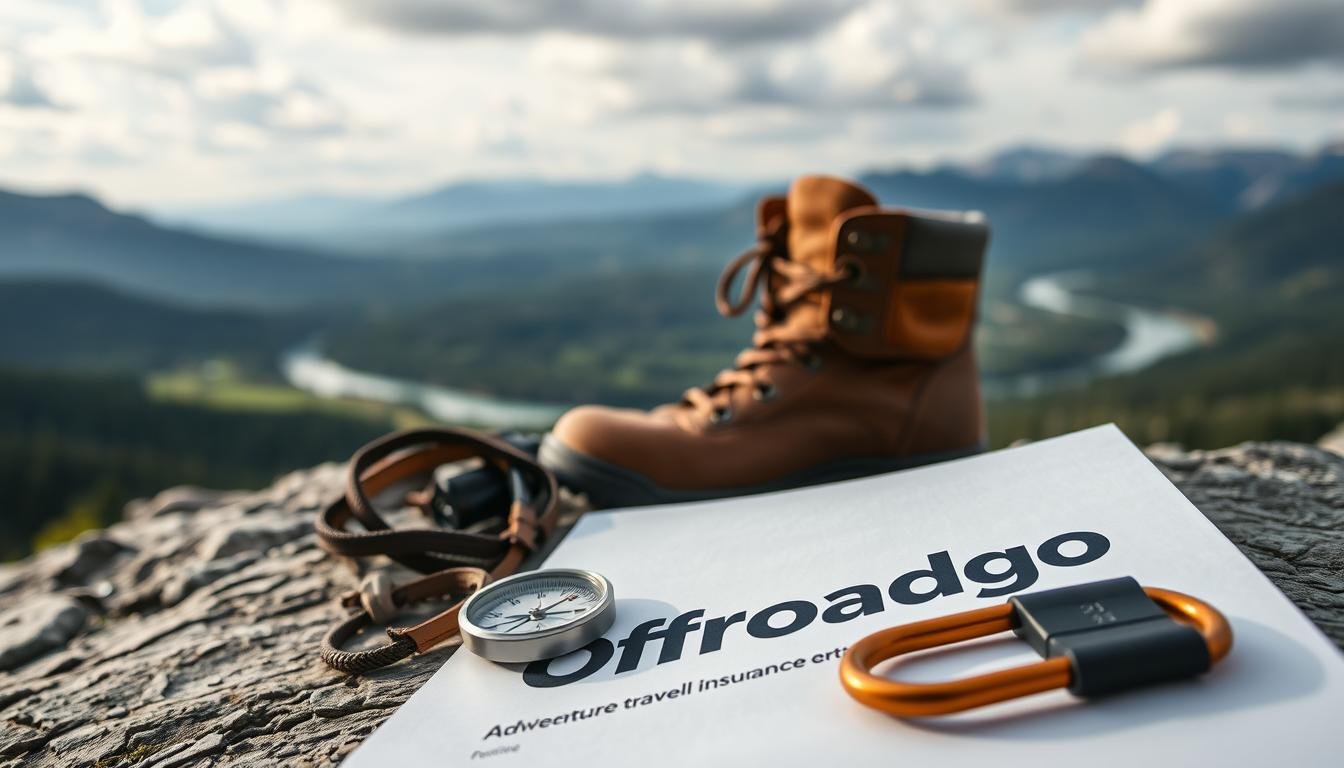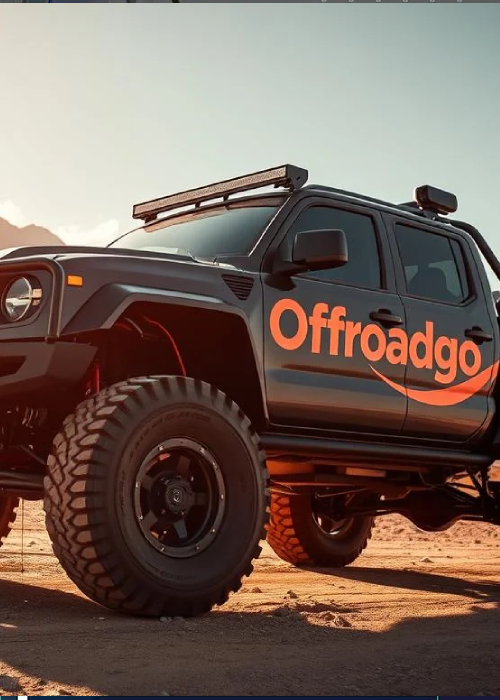“The greatest adventure is what lies ahead.” This quote captures the thrill and uncertainty of adventure trips. It shows why having the right adventure travel insurance is key.
Adventure sports are exciting but risky. Many regular insurance plans don’t cover these high-risk activities. That’s why adventure travel insurance is made for those who love safaris and need safari coverage.
As we look forward to 2025, knowing the value of full coverage for international adventures is important. This includes medical, evacuation, theft, and cancellation.
Key Takeaways
- Adventure travel insurance is crucial for high-risk activities.
- Standard travel insurance plans often exclude adventure sports.
- Specialized policies offer comprehensive coverage for medical, evacuation, and other risks.
- Understanding policy details is essential for adequate protection.
- Coverage for theft and cancellation is also vital for adventure trips.
The Rising Risks of Offroad Adventure Travel
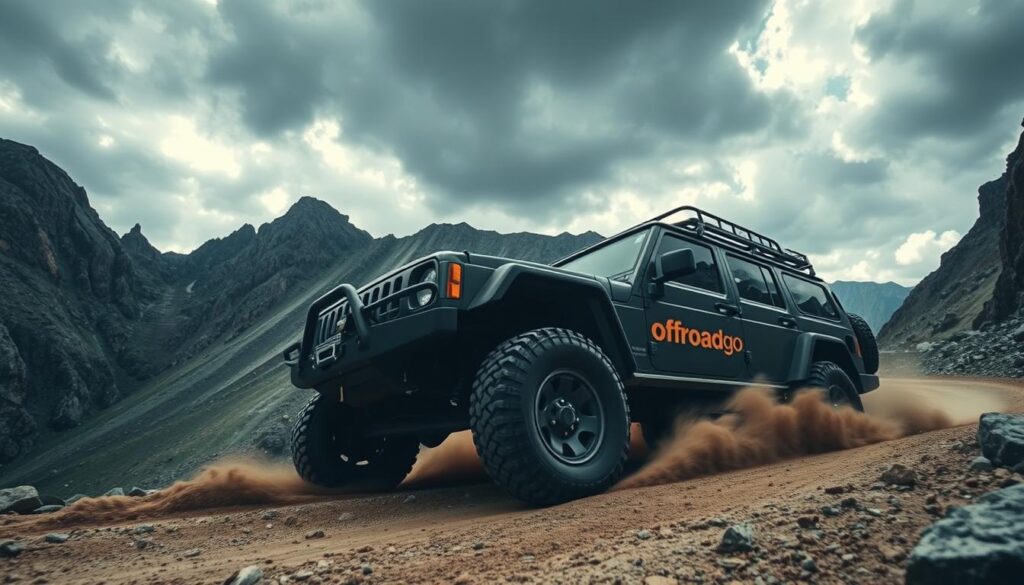
Offroad adventure travel is becoming more popular, but it comes with risks. Travelers going to remote places face many dangers. These can turn a fun trip into a disaster.
Common Hazards in Remote International Destinations
Those who explore off the beaten path face many risks. They might get sick or hurt, leading to medical emergencies. They could also face trip cancellations or lose/damage their gear.
Remote areas often don’t have quick medical help. This means they might need to be flown out for serious issues.
Offroad adventures often include risky activities like rock climbing or deep-sea diving. The rough terrain and changing weather make these risks even higher.
Why Standard Travel Policies Fail Adventure Travelers
Standard travel insurance often doesn’t cover high-risk activities. This leaves adventurers without protection in emergencies. It doesn’t cover things like equipment damage or emergency evacuations well.
For example, offroad driving or jeep safaris might not be covered. Activities like paragliding or bungee jumping are also high-risk and often not included.
To deal with these risks, adventurers need special offroad adventure insurance or adventure trip insurance. This type of insurance is made for their unique needs, offering full coverage for their challenges.
The Essentials of Offroad Travel Insurance 2025
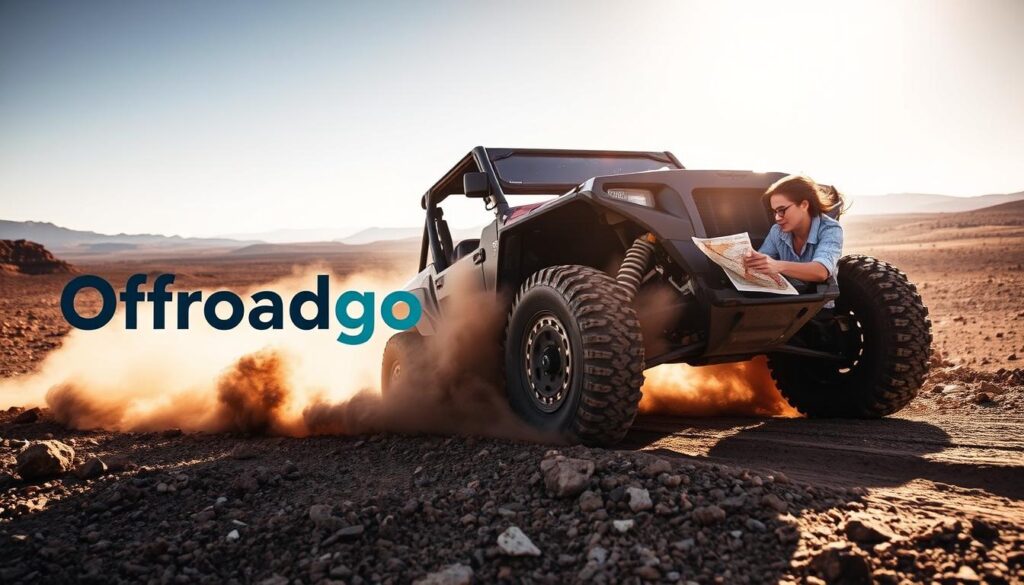
The world of offroad travel insurance is changing in 2025. New policies now offer better coverage for risky activities. As adventure travel gets more daring, insurance companies are stepping up with more detailed and focused plans.
Evolution of Adventure Travel Coverage
Adventure travel insurance has seen big changes. Now, there are policies made just for offroad travelers. These cover everything from jeep safaris to extreme hiking. They protect against accidents or damage to your gear.
Recently, coverage has gotten more complete. You can now get evacuation coverage and equipment protection. This shows how important it is for adventure seekers to have good insurance.
New Policy Features for Modern Adventurers
Today’s adventurers have access to new policy features. These features offer better protection and peace of mind. Some key ones include:
- High-risk activity coverage: Policies now cover more high-risk activities. This means adventurers are safe during extreme sports and activities.
- Emergency medical evacuation: If there’s an emergency, insurance covers the cost of getting you to the nearest hospital.
- Equipment and vehicle protection: Your expensive gear and vehicles are now covered during offroad adventures.
- Trip cancellation and interruption: If your trip gets cut short or canceled, you can get your money back.
These new features show the insurance industry’s dedication to offering comprehensive offroad travel insurance plans. They’re designed to meet the changing needs of adventure travelers in 2025.
Step 1: Assessing Your Adventure Insurance Needs

Figuring out what insurance you need is the first step to a worry-free offroad trip in 2025. Start by listing the activities you plan to do on your trip.
Evaluating Activity Risk Levels
Activities have different risks. Offroad driving is risky, while hiking is less so. Knowing the risk of your activities helps you choose the right insurance.
Here’s a simple way to check activity risk levels:
- Low-risk activities: hiking, sightseeing
- Moderate-risk activities: biking, kayaking
- High-risk activities: offroad driving, skydiving
By sorting your activities by risk, you can see what insurance you need.
Creating a Coverage Checklist
After figuring out your activity risks, make a coverage checklist. It should include:
- Medical coverage for emergency treatments
- Evacuation coverage in case of emergencies
- Equipment coverage for loss or damage
- Trip cancellation coverage
A detailed checklist helps you prepare for any adventure situation.
| Activity | Risk Level | Recommended Coverage |
|---|---|---|
| Offroad Driving | High | Medical, Evacuation, Equipment |
| Hiking | Low | Medical, Trip Cancellation |
| Skydiving | High | Medical, Evacuation, Accident |
This table helps you decide on the right insurance for your offroad trip.
Step 2: Understanding Medical Coverage Options
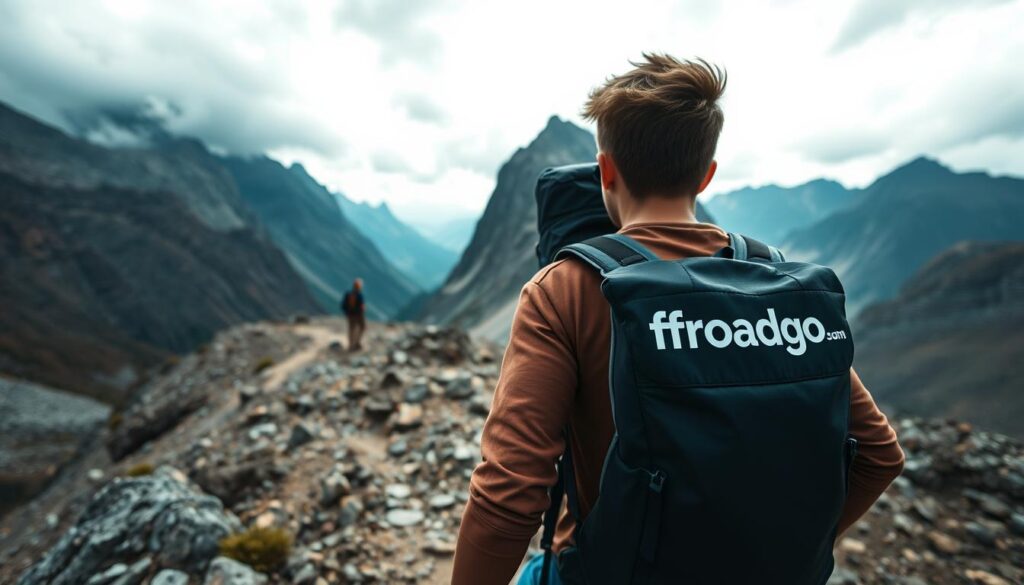
Offroad travelers face unique medical risks. This makes getting comprehensive coverage key. Without it, medical emergencies in remote areas can be very costly.
Emergency Treatment in Remote Locations
Medical emergencies in remote spots are tough due to limited healthcare access. It’s crucial to have insurance that covers emergency treatment, like evacuations and hospital stays.
“The remoteness of many adventure destinations means that medical emergencies often require costly evacuations. Ensuring you have adequate coverage for such eventualities is paramount.”
Adventure travelers need policies that cover emergency medical evacuations. These can be very expensive. Some insurance companies also offer 24/7 emergency hotlines to help with medical responses.
High-Risk Activity Coverage Limits
Doing high-risk activities, like rock climbing or white-water rafting, raises injury chances. It’s important to know your policy’s limits for these activities.
| Activity | Coverage Limit | Additional Premium |
|---|---|---|
| Rock Climbing | $10,000 | $50 |
| White-Water Rafting | $15,000 | $75 |
| Scuba Diving | $20,000 | $100 |
Check your policy’s limits for high-risk activities and any extra costs. This ensures you’re well-protected.
By looking into your medical coverage options, you can prepare for the unexpected challenges of offroad and adventure travel.
Step 3: Selecting Evacuation Insurance Coverage
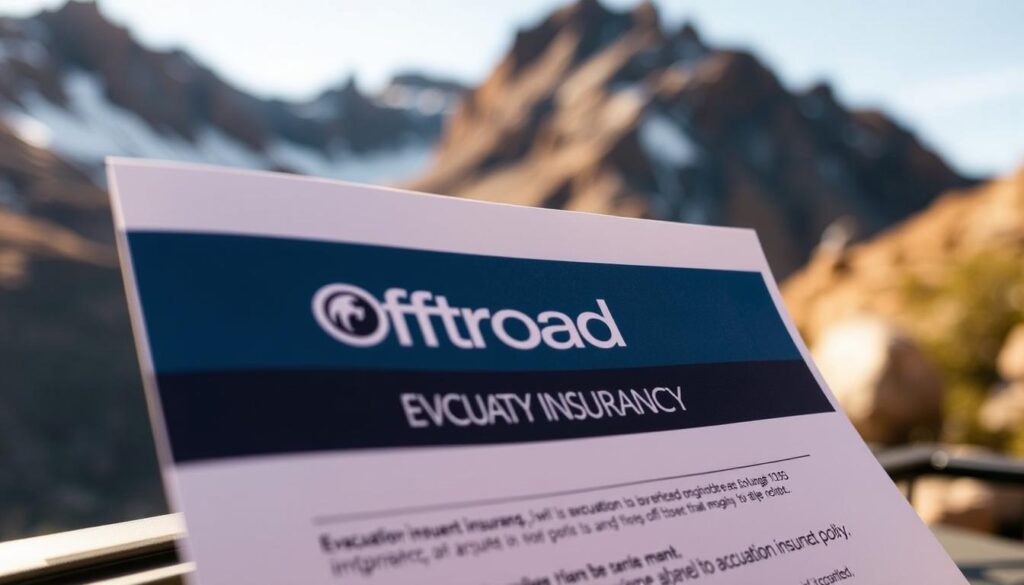
When you’re exploring the unknown, the right evacuation insurance can save your life. Adventure travelers often face remote areas with no nearby hospitals. This makes evacuation insurance a key part of their travel plans.
Evacuation insurance pays for emergency evacuations. This includes medical evacuations, repatriation, and search and rescue operations. It’s important to know what evacuation insurance covers to make smart choices.
Medical Evacuation vs. Repatriation
Medical evacuation and repatriation are two important parts of evacuation insurance. Medical evacuation means moving a patient to a hospital for treatment. Repatriation is about sending the patient back to their home country for treatment or recovery.
- Medical evacuation covers the cost of moving a patient to a hospital.
- Repatriation covers the cost of sending the patient back home.
Both medical evacuation and repatriation can be very expensive. This is especially true for travelers in remote or international places. The right insurance can help reduce these costs.
Search and Rescue Operations Coverage
Search and rescue operations are needed in emergencies, especially in wilderness or off-road areas. Search and rescue operations coverage helps pay for finding and helping stranded or injured travelers.
The cost of search and rescue operations can be very high. It can range from thousands to tens of thousands of dollars. Insurance that covers these costs can be a big help for adventure travelers.
In conclusion, choosing the right evacuation insurance is vital for adventure travelers. Knowing the difference between medical evacuation and repatriation, and the importance of search and rescue coverage, helps travelers make informed choices. This ensures a safe and secure journey.
Step 4: Protecting Your Gear and Vehicles
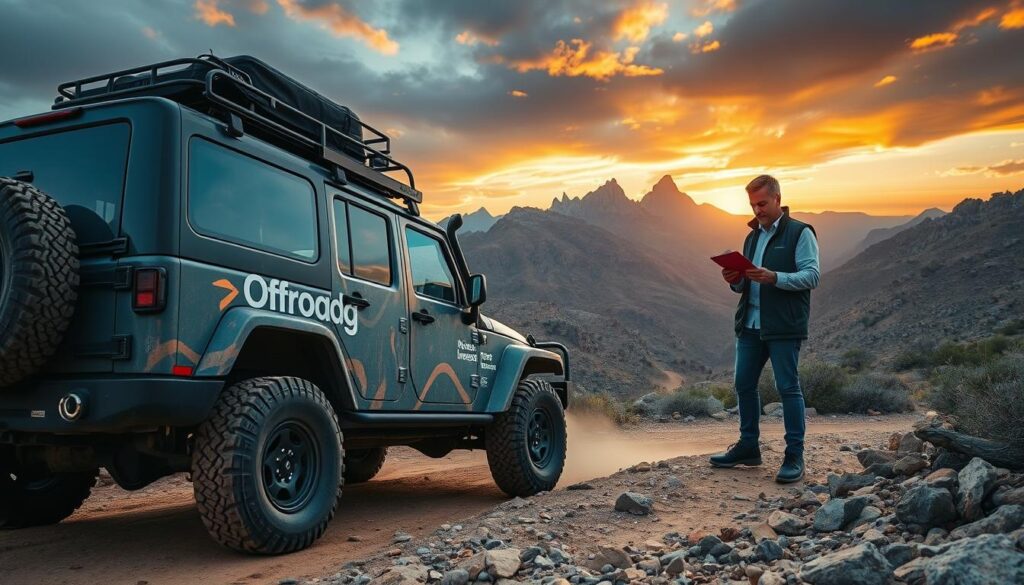
Offroad adventures are exciting, but keeping your gear and vehicles safe is key. Exploring new places should not mean risking your equipment and vehicles.
Equipment Protection Strategies
Travelers often spend a lot on gear like cameras, drones, and outdoor equipment. To avoid loss or damage, try these equipment protection strategies:
- Use rugged, waterproof cases to protect sensitive equipment.
- Invest in equipment insurance that covers loss, theft, or damage.
- Regularly maintain and inspect your gear to ensure it’s in good condition.
Jeep Safari Insurance Requirements
Jeep safaris need specialized insurance coverage. These adventures come with unique risks like vehicle damage and accidents. Here’s what to look for in insurance:
- Ensure the policy covers offroad vehicle insurance, including damage to the vehicle.
- Check if the policy includes coverage for medical emergencies resulting from accidents.
- Review the policy’s terms regarding vehicle recovery or towing services.
Knowing the insurance needs for jeep safaris and using good protection strategies helps. This way, adventure travelers can enjoy their offroad adventures more safely.
Step 5: Evaluating Trip Cancellation Policies

For adventure travelers, knowing trip cancellation policies is key. It helps avoid financial losses from unexpected events.
Trips can be canceled for many reasons. This includes natural disasters, health emergencies, or travel restrictions. It’s important to know how insurance covers these situations.
Adventure-Specific Cancellation Scenarios
Adventure travel comes with risks, like hiking or diving. Insurance policies have special rules for these activities.
- Weather-related cancellations: Many policies cover severe weather cancellations.
- Activity-specific cancellations: Some insurers cover cancellations for adventure activities, like tours or rentals.
- Health-related cancellations: Policies often cover illness or injury, but details vary.
Experts say, “Knowing your insurance policy’s details is key, especially for adventure activities.”
“Travelers should carefully review what is covered and what is not to avoid surprises.” –
Reimbursement Options and Limitations
Reimbursement for trip cancellations varies by insurance provider. It’s crucial to understand the terms.
| Reimbursement Type | Description | Limitations |
|---|---|---|
| Full Refund | Complete reimbursement of trip costs | Typically requires cancellation before a specific deadline |
| Partial Refund | Partial reimbursement based on costs incurred | May have minimum and maximum limits |
| Credit Voucher | Voucher for future travel | Often has expiration dates and usage restrictions |
When looking at reimbursement options, think about the costs and the chance of needing to cancel.
By carefully checking trip cancellation policies, adventure travelers can make smart choices. This protects their investments.
Step 6: Comparing Adventure Trip Insurance Providers

Choosing the right adventure trip insurance provider is crucial in case of an emergency. There are many options, so travelers need to research and compare to find the best fit.
Specialized vs. Traditional Insurance Companies
Specialized insurance companies focus on adventure travel. They offer tailored policies for high-risk activities. Traditional insurance companies provide more general coverage, which might not be as good for adventure travelers.
Key differences between specialized and traditional insurance companies include:
- Coverage for high-risk activities
- Policy flexibility
- Customer support for adventure-related claims
| Insurance Type | Coverage for High-Risk Activities | Policy Flexibility | Customer Support |
|---|---|---|---|
| Specialized | Comprehensive | High | Excellent |
| Traditional | Limited | Moderate | Good |
Insurer Reputation and Claim Settlement Rates
When comparing insurance providers, look at their reputation and claim settlement rates. A high claim settlement rate means they are more likely to approve your claims.
Factors to consider when evaluating insurer reputation include:
- Customer reviews and ratings
- Financial stability
- Claim settlement history
By comparing adventure trip insurance providers based on their specialization, reputation, and claim settlement rates, travelers can make informed decisions. This ensures they have the right coverage for their adventures.
Step 7: Analyzing Policy Costs and Value

For those who love adventure, the cost of travel insurance is a big deal. It’s important to understand what makes policy costs go up and how to get good coverage without spending too much.
Premium Factors for High-Risk Adventures
Several things can change how much you pay for adventure travel insurance. These include your age, where you’re going, how long you’ll be there, and what activities you’ll do. For example, skydiving or deep-sea diving are risky and will cost more.
Knowing these premium factors helps you make smart choices about your insurance. By looking at the risk of your activities and destinations, you can guess the costs better.
Cost-Saving Strategies Without Sacrificing Coverage
It’s important to have good coverage, but you can save money too. One way is to get all your insurance from one place. This can often lead to discounts.
Another way is to check and change your policy’s limits and deductibles. Choosing higher deductibles can lower your costs, but make sure you can pay the deductible if needed.
- Compare policies from different providers to find the best value.
- Consider the reputation and claim settlement rates of the insurer.
- Look for specialized adventure travel insurance policies that cater to your specific needs.
By using these cost-saving strategies, adventurers can find a good balance. They can get affordable coverage that still protects them, giving them peace of mind on their travels.
Step 8: Reading and Understanding Policy Documents

Before you start your adventure, take time to read and understand your insurance policy. This step is key to knowing what’s covered and what’s not. It helps you avoid problems on your trip.
Deciphering Insurance Terminology
Insurance policies use technical terms that can confuse you. Key terms to look out for include “deductible,” “premium,” “exclusions,” and “coverage limits.” Knowing these terms helps you understand your coverage fully.
- Deductible: The amount you must pay before your insurance starts.
- Premium: The cost of your insurance policy.
- Exclusions: Specific situations or circumstances not covered by your policy.
- Coverage limits: The maximum your insurer will pay for a claim.
Identifying Exclusions and Limitations
Exclusions and limitations can affect your coverage a lot. Carefully review these parts to know what’s not covered. Common exclusions in adventure travel insurance include pre-existing medical conditions, high-risk activities, and travel to certain countries.
| Exclusion Type | Description | Example |
|---|---|---|
| Pre-existing medical conditions | Conditions you had before buying the insurance | Diabetes, heart conditions |
| High-risk activities | Activities seen as dangerous by the insurer | Extreme skiing, skydiving |
By fully understanding your policy documents, you can make smart choices about your coverage. This ensures a safer adventure travel experience.
Step 9: Purchasing and Documenting Your Coverage
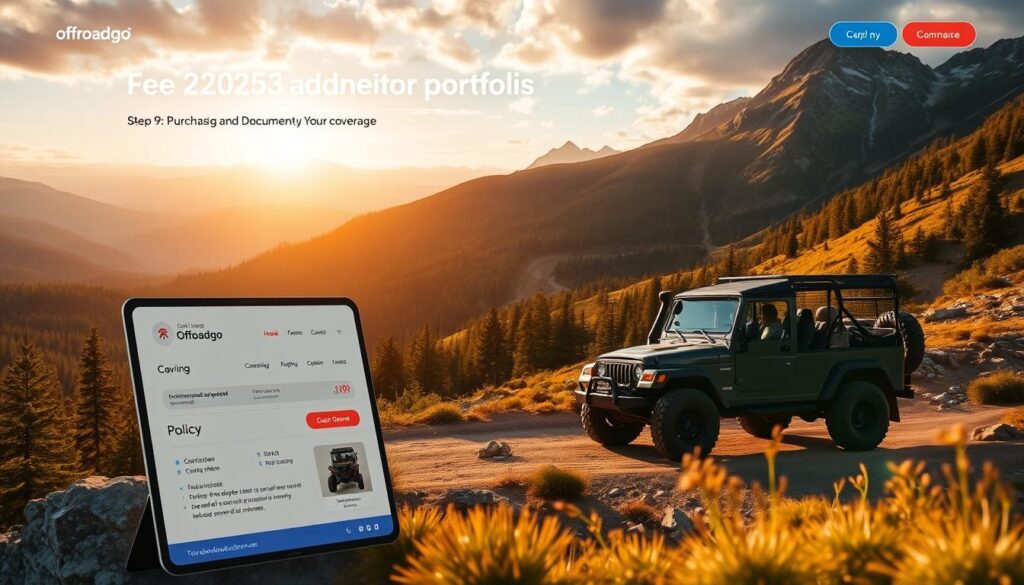
Now that you know what insurance you need, it’s time to buy. You can choose between buying online or getting help from an agent. Each option has its own benefits.
Online vs. Agent-Assisted Purchase Options
Buying insurance online is quick and easy. Websites let you compare policies and get quotes fast. But, some people like talking to agents for advice on their adventure plans.
Key differences between online and agent-assisted purchases:
| Feature | Online Purchase | Agent-Assisted Purchase |
|---|---|---|
| Speed | Immediate | Variable, depends on agent availability |
| Personalization | Limited | Highly personalized |
| Cost | Often lower premiums | May offer more comprehensive options |
Creating a Digital Insurance Portfolio
After you buy your insurance, it’s key to keep your coverage documents safe. A digital insurance portfolio helps. It’s a place to store your insurance details and emergency contacts online.
Best practices for a digital insurance portfolio:
- Store documents in a secure cloud storage service.
- Keep a backup on your mobile device.
- Share access with emergency contacts if possible.
- Regularly update your documents.
By following these steps, adventure travelers can make sure they have the right coverage. They also have easy access to their insurance documents when they need them.
Conclusion: Ensuring Peace of Mind for Your 2025 Adventures
Adventure travel is becoming more popular, and getting the right insurance is key. Offroad travel insurance 2025 helps protect against unexpected events. It gives travelers peace of mind.
Travelers can choose from medical coverage, evacuation insurance, and equipment protection. This guide helps pick the right insurance. It covers how to assess risk levels and compare providers.
With the right insurance, travelers can enjoy their adventures without worry. Whether it’s a jeep safari or hiking in remote areas, insurance is crucial. It ensures a worry-free experience.
Investing in adventure travel insurance lets travelers enjoy their experiences without stress. This peace of mind is priceless. It makes offroad travel insurance 2025 a smart choice for any adventurer.
